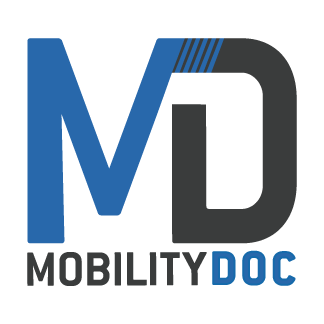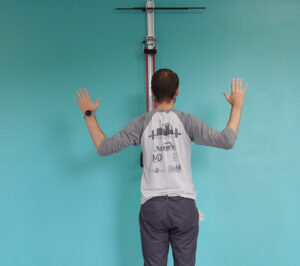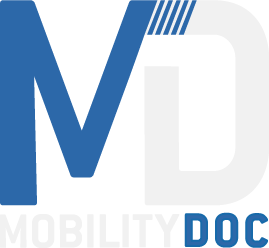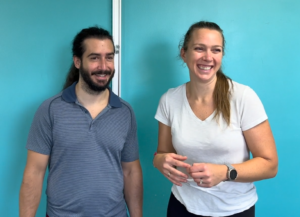Trail running is one of the most dynamic and demanding forms of running out there. Unlike the roads or the track, the trail never gives you the same step twice. You’re constantly adapting—balancing on roots, hopping over rocks, navigating steep climbs, and adjusting for uneven terrain. Because of that, your body needs to be ready for anything and everything.
This is why mobility is so important for trail runners—not just flexibility, but true mobility: the ability to move through full ranges of motion with control and strength. That means you need dynamic mobility in your hips, spine, and ankles, working together but also able to move independently. Here’s why:
- Your hips are your power center. They need to stabilize you on single-leg landings and allow for smooth transitions uphill and downhill.
- Your spine, particularly the thoracic region (upper/mid-back), needs to rotate independently of your hips so your whole body can flow with the terrain rather than fight it.
- Your ankles act like slingshots on the trail, absorbing load and then propelling you forward—especially when climbing or bounding over obstacles.
3 Mobility Exercises That Build Trail-Ready Movement
Here’s how each exercise targets the specific needs of trail runners—and how they work together to make you a better, more resilient runner.
1. Deep Lunge with Thoracic Rotation

Builds spinal mobility + hip dissociation
This exercise opens up your hip flexors and adductors while encouraging your spine to rotate independently from your hips—a critical skill when navigating twisty trails or dodging branches. The lunge position mimics your running stride, while the rotation trains your body to move more efficiently through your torso without overloading your lower back or hips.
Trail benefit: Improves running posture, stride efficiency, and upper-body rotation, especially on technical descents or sharp turns.
2. Dynamic Calf Stretch
Restores ankle mobility + strengthens the slingshot
Tight calves can limit your ankle dorsiflexion, which reduces your ability to load and spring forward—especially on climbs. This dynamic stretch builds range in the ankle joint while activating single leg hip stability. The movement mimics the spring-loading motion your ankle performs with each step, especially uphill.
Trail benefit: Enhances push-off power, reduces Achilles strain, and improves control on uneven surfaces.

3. Hip Gates

Builds hip mobility + single-leg stability
Hip gates teach your hips to move through their full range while maintaining spinal control. They’re excellent for prepping your hips for single-leg demands, helping improve balance, coordination, and control with every step. This is key on trails where every footfall is different.
Trail benefit: Boosts balance and stability on technical terrain, and supports healthy hip-spine separation.
The Mobility-Doc Method: How to Use These Exercises
To get the most out of these moves, we recommend doing them as a Mobility-Doc Method primer—that means performing them circuit-style in 3 rounds, with 10 reps per side (since each is asymmetrical). This is a great way to warm up your body before a run or reset and recover after one.
Before your run: Use them to wake up your muscles, fire up stabilizers, and build readiness for the demands of the trail.
After your run: Use them to cool down, improve recovery, and reset your movement patterns for your next outing.
Watch Our How To Video Trail Running Mobility Exercises Video
Trail running demands more than just endurance—it requires precision, adaptability, and total-body mobility. By consistently working on your spine, hips, and ankles with these three focused exercises, you’ll not only reduce your risk of injury but also unlock better performance on every run.
Your body was built to move dynamically—these moves make sure it stays that way.
MDFit - Your Forever Mobility Answer
I know what you’re thinking… forever? yeah right… Let me introduce myself. My name is Sasha—former professional figure skater, turned patient, turned MDFit lover. Let me tell you this: I am living proof that it works!
If you don’t know, MDFit is created in 4 week cycles and focuses on 3 main aspects: strengthening and mobilizing your upper body, lower body, and core. After just two months, I started noticing real changes. My body felt stronger, I moved more easily, and everyday things—from running to doing housework—just felt better.
Now, full honesty: I’ve always had terrible upper body strength and mobility, plus a nagging knee injury that loved to make itself known. But after sticking with MDFit for a couple of months, those tweaks and twinges started to fade. My movements felt smoother. My asymmetries started to even out.
The best part? Fresh programming every 4 weeks so your body is constantly being challenged. Because MDFit is designed by doctors who don’t just understand movement—they love it—I never second-guess the workouts. Each one is built with specific intent: to target a range of motion or pattern that helps me move better, feel better, and live better.
It’s hard to believe, but carving out just 30 minutes, 3x per week has created profound changes in how my body feels and performs. It’s created to supplement your fitness, not replace it.
If you’re looking for something that actually makes a difference—and that keeps making a difference—I highly recommend giving MDFit a real shot. Stick with it for a few months, bring some intention and consistency, and you will see results.






